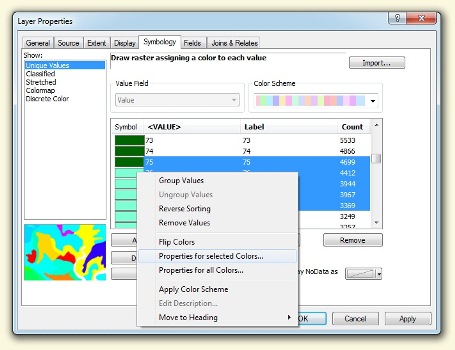FAQs
BARC data is made by comparing satellite near and mid infrared reflectance values. The logic behind the process is as follows:

Near infrared light is largely reflected by healthy green vegetation. That means that near infrared bands will be very high in areas of healthy green vegetation and low in areas where there is little vegetation.
Mid infrared light is largely reflected by rock and bare soil. That means that mid infrared band values will be very high in bare, rocky areas with little vegetation and low in areas of healthy green vegetation.
Imagery collected over a forest in a pre-fire condition will have very high near infrared band values and very low mid infrared band values. Imagery collected over a forest after a fire will have very low near infrared band values and very high mid infrared band values.
For more information see Spectral Reflectivity Overview PDF(link is external)
It is the relationship between these two bands that the BARC attempts to exploit. The best way to do this is to measure the relationship between these bands prior to the fire and then again post fire. The areas where the relationship between the two bands has changed the most are most likely to be severely burned. The areas where that relationship has changed little are likely to be unburned or very lightly burned. To determine this relationship, analysts perform a band ratio between the mid and near infrared bands. The result is a classification of burned areas.
In addition to delivering the 4-class BARC data to field teams, GTAC also provides field users a continuous 256-class version of the BARC. This is called the BARC256. This dataset provides users the ability to adjust the break points between reflectance classes. Analysts at GTAC will color code the BARC256 image using the same classification scheme used for the BARC4 data, but the BARC256 will not be recoded into 4 classes.

The color-coding on the BARC256 done by GTAC is meant to act as a starting point for field team members. Users can view the color scheme and adjust these break points as desired. This can easily be done in ArcMap. For step-by-step instructions on making break point adjustments, please refer to this document:
The data will also typically be sent as a square or rectangular subset that covers land outside the fire perimeter. This can easily be clipped to the fire perimeter of choice using ArcMap’s Spatial Analyst extension.
The colors represent burn severity classes (high, moderate, low and unburned). "Warm" colors indicate higher severity (red = "high" and yellow = "moderate") and "cool" colors indicate lower severity ("low" and "unburned"). Color definitions for each class are available in the attribute table for GeoTIFFs and in legends associated with other graphic products.